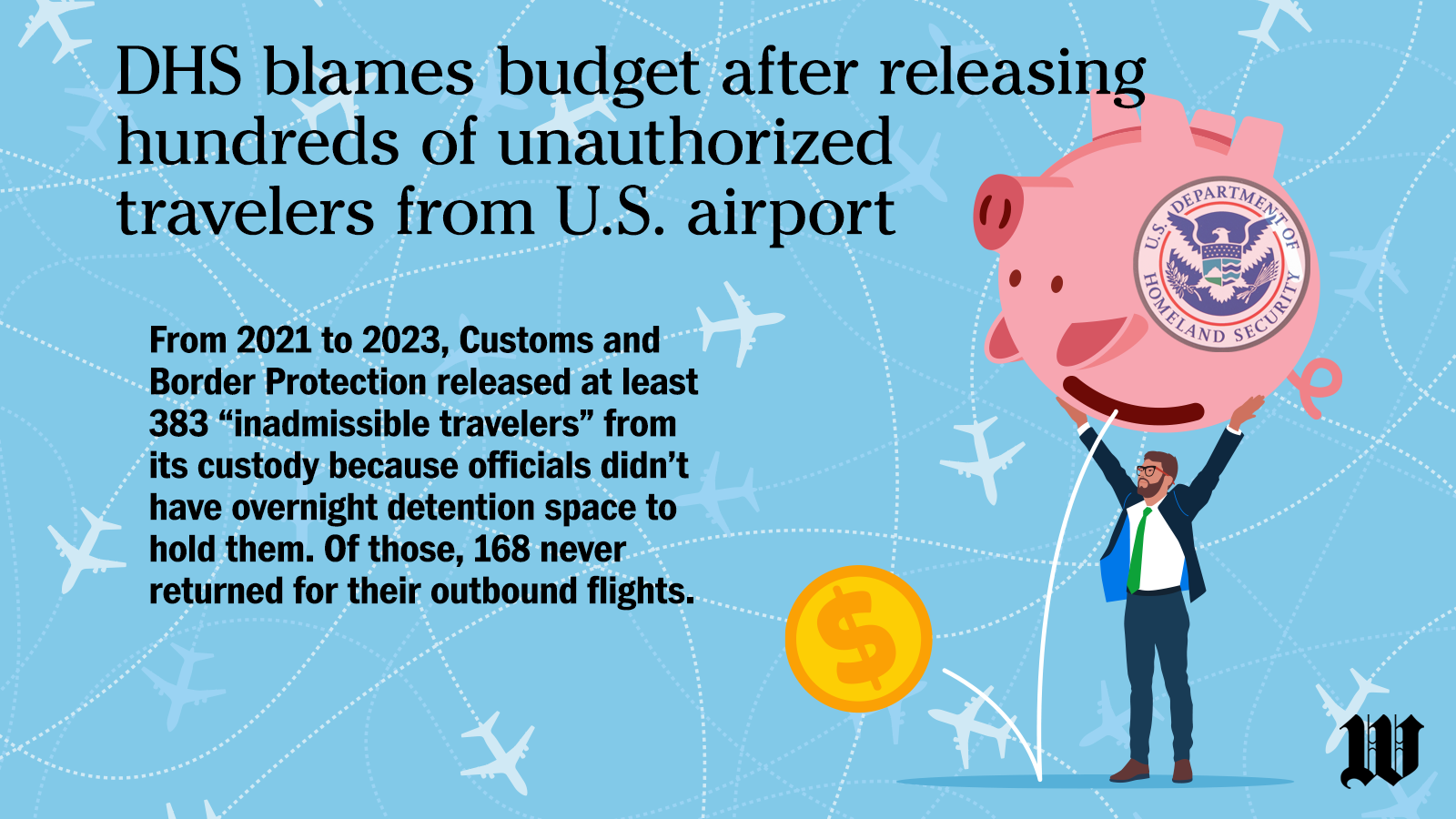The Department of Homeland Security let dozens of illegal immigrants walk free from an airport because it didn’t have the space to hold them until their departing flights, and nearly half of them disappeared, never returning for their scheduled departures, an inspector general said Monday.
The audit redacted the name of the airport where the bungles happened, but the details were stunning.
From 2021 to 2023, Customs and Border Protection released at least 383 “inadmissible travelers” from its custody because officials didn’t have overnight detention space to hold them. Of those, 168 never returned for their outbound flights, the inspector general said.
It said CBP didn’t have enough money to pay officers to stay with the people, and U.S. Immigration and Customs Enforcement — the detention agency — refused to help, citing its own shortages of bed space and staffing.
Worse yet, CBP never issued immigration summonses to dozens of the travelers because the agency “did not have an effective process to track” those who failed to come back to the airport.
The travelers were coming to the U.S. but were deemed inadmissible when they were screened on arrival. Under those conditions, they are supposed to be put on a plane back.

CBP can either hold them at the airport for up to 72 hours for a return flight, or can ship them to ICE for a hold, or can send them to another airport that has an available flight. Or in some cases, the traveler can be released.
ICE said it’s too much of a hassle to handle the travelers.
“They said booking inadmissible travelers into a detention center requires a time-consuming paperwork review and medical evaluation process, and the office does not have enough personnel to frequently complete this process for overnight detention requests,” the inspector general said.
ICE also said it needs all its local detention space for higher-priority cases, and said it only has one person available after regular business hours anyway. That person is supposed to be waiting for calls from prisons and jails offering illegal immigrants for pickup.
CBP said it can’t afford to detain the travelers itself. It costs as much as $3,000 a night to detain them, but the agency’s airport only has a daily overtime budget of $1,500. Releasing the migrants meant the agency had more money to dedicate to other operations, such as screening cargo.
Sending the travelers to another airport was a no-go because the other parties had to agree to the transfer.
That led to the releases, which CBP officers did with a verbal warning to come back for their return flights.
When the migrants don’t return, ICE then adds them to its 7 million-person docket of migrant cases.
But in dozens of cases, CBP didn’t even issue the court summons, or Notice to Appear (NTA).
“During our June 2023 visit … we observed stacks of files for inadmissible travelers who had not returned and did not receive NTAs,” the inspector general said.
Even with NTAs issued, the government can face lengthy deportation court battles to oust migrants. When NTAs aren’t issued, the migrants aren’t officially in deportation proceedings at all, making their ouster even tougher.
Jim Crumpacker, Homeland Security’s liaison to the inspector general, said they “remain committed to ensuring compliance.”
He said the officers involved do security checks to make sure the travelers they release are “prioritized for referral for detention, when necessary.”
Mr. Crumpacker said the department would work on all three of the inspector general’s recommendations, but investigators said his response wasn’t satisfactory.
• Stephen Dinan can be reached at sdinan@washingtontimes.com.




Please read our comment policy before commenting.